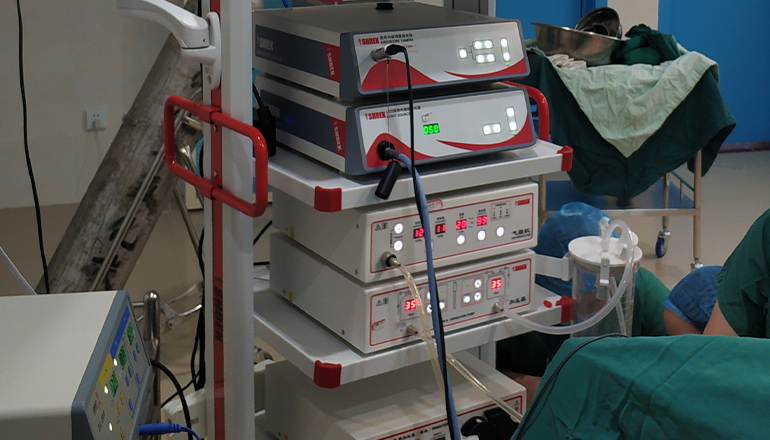- Shanghai, China
- [email protected]
- +86-21-58189111
Hysteroscopy is a minimally invasive surgical procedure that allows gynecologists to view and treat conditions within the uterus. During a hysteroscopic operation, the surgeon uses specialized instruments, including an endoscope, to visualize the uterine cavity. One important aspect of the procedure is the use of irrigation, which plays a vital role in ensuring a successful outcome. Here are some of the key roles of irrigation in hysteroscopic operation:
Visualization
The main role of irrigation in hysteroscopic surgery is to provide clear visualization of the uterine cavity. A fluid, usually saline solution, is introduced into the uterus through the hysteroscope to expand and distend the cavity, allowing the surgeon to see the inside of the uterus clearly. This provides a better view of any abnormalities or conditions, such as polyps, fibroids, or adhesions, that need to be addressed during the procedure.
Instrumentation
Irrigation also plays a role in facilitating the use of specialized instruments during hysteroscopic surgery. The fluid introduced into the uterus helps to create a working space for the surgeon, allowing them to use instruments such as scissors, biopsy forceps, or a resectoscope to perform the necessary procedures. The use of irrigation helps to prevent the instruments from sticking to the uterine wall or causing damage during the procedure.

Thermal control
During hysteroscopic surgery, the use of energy-based instruments, such as a bipolar electrode or a hysteroscopic resectoscope, can lead to an increase in temperature in the uterus. The use of irrigation helps to control the temperature by absorbing the heat generated by the instrument and dissipating it. This helps to prevent thermal injury to the uterus and surrounding tissues.
Removal of debris
Irrigation also helps to remove debris or tissue fragments that may be generated during the procedure. The fluid introduced into the uterus helps to flush out any debris and maintain clear visualization of the surgical field. This helps to prevent the debris from interfering with the procedure or causing infection or inflammation.
Reduced risk of complications
The use of irrigation during hysteroscopic surgery helps to reduce the risk of complications. It helps to maintain a clear view of the surgical field, control the temperature, and prevent the instruments from causing damage to the uterus. This helps to minimize the risk of bleeding, infection, or other complications associated with hysteroscopic surgery.
In conclusion, irrigation is an essential part of hysteroscopic surgery that plays a vital role in ensuring a successful outcome. It provides clear visualization of the uterine cavity, facilitates the use of specialized instruments, helps to control temperature, removes debris, and reduces the risk of complications. As with any surgical procedure, it is important to have a skilled surgical team with the proper training and experience to ensure the best possible outcome for the patient.
In addition, there are different techniques for irrigation during hysteroscopic surgery. One common method is continuous flow irrigation, where the fluid is constantly introduced into the uterus and removed through a suction device. Another technique is intermittent or pulsed irrigation, where the fluid is introduced and removed in cycles. The choice of technique depends on the surgeon's preference and the specific procedure being performed.
It is important to note that while irrigation is a critical part of hysteroscopic surgery, it is not without risks. Complications such as fluid overload, electrolyte imbalances, or uterine perforation may occur if the procedure is not performed properly. Thus, it is important for the surgical team to carefully monitor the patient's fluid balance and vital signs during the procedure and take appropriate measures to prevent or address any complications.
In conclusion, irrigation plays a crucial role in hysteroscopic surgery, providing clear visualization, facilitating instrumentation, controlling temperature, removing debris, and reducing the risk of complications. The proper use of irrigation techniques, coupled with skilled surgical expertise, can help ensure a successful outcome for the patient.
Leave a Comments